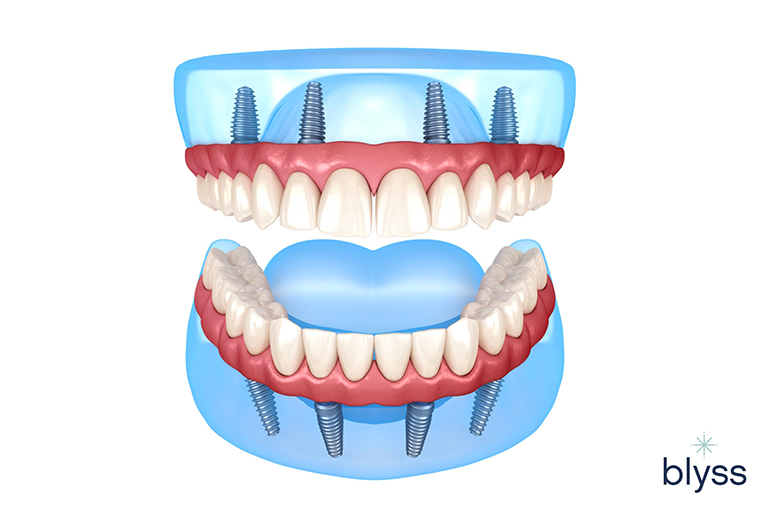The Main Principles Of Dental Sense
Table of ContentsThe Ultimate Guide To Dental SenseThe Single Strategy To Use For Dental SenseDental Sense Things To Know Before You Get ThisFascination About Dental Sense
are clinical devices surgically dental implanted into the jaw to restore an individual's ability to chew or their appearance. They provide support for fabricated (phony) teeth, such as crowns, bridges, or dentures. When a tooth is shed because of injury or illness, an individual can experience difficulties such as rapid bone loss, malfunctioning speech, or changes to chewing patterns that cause pain.Dental dental implant systems include an oral implant body and dental implant joint and might likewise include a joint addiction screw. Professional teeth whitening. The oral implant body is surgically inserted in the jawbone instead of the tooth's origin. The dental implant joint is typically connected to the implant body by the joint fixation screw and extends via gum tissues into the mouth to support the connected fabricated teeth
(https://dental-sense.jimdosite.com/)Framework of The Dental Implant System selecting oral implants, talk with your dental supplier regarding the possible benefits and dangers, and whether you are a candidate for the procedure. Points to consider: Your total health is a crucial aspect in determining whether you are a great prospect for dental implants, how much time it will take to heal, and for how long the dental implant might stay in location.
Smoking cigarettes may influence the healing procedure and lower the long-lasting success of the dental implant. The healing procedure for the implant body may take numerous months or longer, during which time you usually have a momentary abutment instead of the tooth. the oral implant procedure: Thoroughly adhere to the oral health guidelines provided to you by your dental supplier.
The Only Guide to Dental Sense
Implant failing can lead to the demand for an additional surgical procedure to take care of or replace the implant system. Brings back the ability to eat Recovers aesthetic look Helps keep the jawbone from shrinking as a result of bone loss Maintains the health and wellness of the bordering bone and periodontals Assists keep adjacent (nearby) teeth steady Enhances lifestyle Damage to bordering natural teeth during dental implant positioning Injury to the surrounding cells throughout surgical procedure, such as sinus opening Injury during surgical procedure (for instance, fracture of bordering jawbone) Inadequate feature, such as feeling like the teeth do not bite together generally A sensation that the tooth hangs or twisting in place arising from a joint screw loosening up Implant body failing (looseness of the implant body) as a result of systemic infection, which may be extra likely in people with unchecked diabetics issues because of neighborhood infection in bone and gums sustaining the dental implant body as a result of postponed healing, which may be most likely in patients that smoke Trouble cleaning the gum tissues around the dental implant, resulting in inadequate dental hygiene Neglected gum illness Post-surgical numbness because of nerve impingement or damages Always inform healthcare companies and imaging specialists that you have dental implants before any kind of magnetic resonance imaging (MRI) or x-ray treatments.
FDA is not aware of any kind of unfavorable events reported for MRI or x-ray treatments with oral implants. Oral implants systems are usually constructed from products that comply with international consensus criteria of the International Company for Standardization (ISO) or ASTM International. These criteria have details of what makes a safe material.

A dental implant is a framework that changes a missing tooth. With screw-like tools, the doctor inserts an implant right into the jawbone, and it works as an anchor for an artificial tooth, called a crown. A tool called an abutment connects the fabricated tooth to the dental implant. The crown is personalized to fit the individual's mouth and match the color of their teeth.
Facts About Dental Sense Revealed
Some individuals are not qualified for dental implant surgery. It is for oral specialists to operate individuals with: acute illnessuncontrollable metabolic diseasebone or soft cells disease or infectionIf these problems are resolved, a person can have the surgical treatment. In, dental cosmetic surgeons abstain from running on individuals with: If people with why not try this out any of the above undergo dental implant surgery, there is a greater risk of the dental implant failing.

Oral implant surgery is a personalized procedure. It's not the very same for every person. The following provides a basic overview of what you can expect your dental professional, dental surgeon, periodontist or prosthodontist to do: Place the dental implant operatively. Give you time to heal. Connect the article and final crown, bridge or denture.
Next, your cosmetic surgeon will very carefully place the oral implant right into your jaw. If your dental implant is near the front of your mouth, your dentist will certainly make a short-lived tooth for you to wear until you recover.
10 Simple Techniques For Dental Sense
Your copyright can tell you what to anticipate in your scenario. Throughout the recovery phase, your jawbone needs to fuse to the dental implant. This procedure, called osseointegration, is important for security and lasting success. This procedure can take anywhere from three to nine months. In many cases, it may take much longer.
When your implant heals, your dentist can connect the abutment (tiny adapter article) and your final repair (crown, bridge or denture). This generally takes about one hour to complete and might need a 2nd small surgical treatment. You shouldn't feel any type of pain during your dental implant treatment due to the fact that your company will make use of drug to numb your gums.